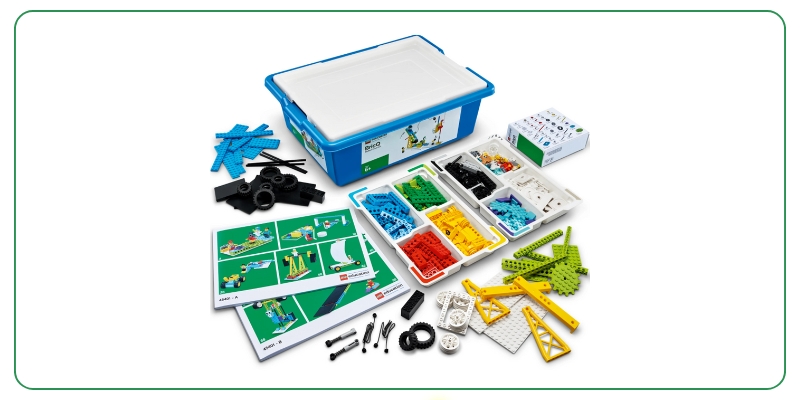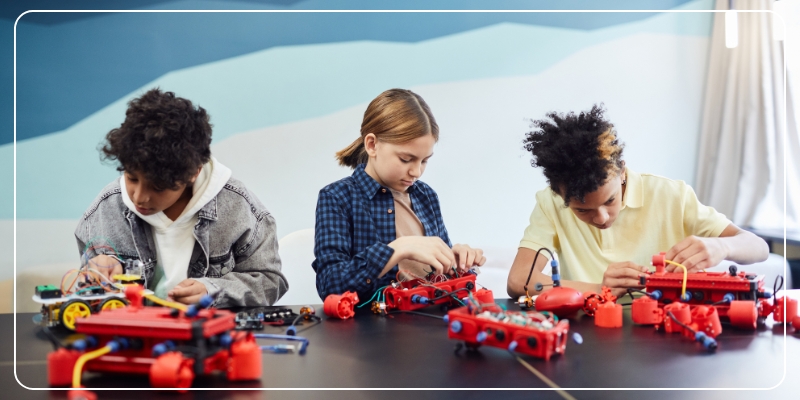
How ICT 360 is Redefining the Future of Computer Science Education in Schools
In today’s fast-paced digital landscape, preparing students with just textbook knowledge is no longer enough. Schools must cultivate digitally literate, creative, and adaptive learners – and that begins with transforming how computer science is taught. ICT 360 offers a revolutionary approach, providing a future-ready computer science curriculum designed for the demands of the 21st century.
What Makes ICT 360 Different?
Unlike conventional ICT programs that focus on theoretical or outdated skills, ICT 360 is built on the principle of “learn by doing.” It brings real-world, project-based experiences into the classroom, integrating artificial intelligence, coding, digital literacy, and design thinking for Grades 1 to 10.
ICT 360 is not just a digital toolkit – it’s a complete ecosystem that supports students, teachers, and school leaders alike in creating a culture of innovation and tech fluency.
A Curriculum Built for the Real World
ICT 360 is structured around today’s most essential digital competencies:
Teacher-Friendly and School-Centric
One of the standout features of ICT 360 is its plug-and-play nature. Schools don’t need to invest in expensive hardware or spend months training staff. Everything comes ready:
- Pre-made lesson plans
- Interactive presentations
- Hands-on activity guides
- Assessment tools
- Ongoing teacher support and training
This makes ICT 360 an ideal solution for schools of all sizes and boards – whether they follow CBSE, ICSE, IB, or state curriculums.
Aligned with Global and National Standards
ICT 360 is built in alignment with India’s NEP 2020, ensuring early exposure to computational thinking, problem-solving, and AI. It also integrates principles from leading global education frameworks such as ISTE and CSTA.
By aligning with these standards, ICT 360 prepares students for global opportunities and careers, ensuring they are not just consumers of technology but creators of it.
Real Projects, Real Impact
One of the key differences with ICT 360 is its emphasis on applying knowledge. Students aren’t just coding for practice – they’re building something meaningful. For example:
- A Grade 5 student might build a weather prediction tool using data sets.
- A Grade 8 student could design a chatbot to assist with school FAQs.
- Grade 10 learners can develop AI projects that address real societal challenges.
These projects are not just academic — they’re portfolio-worthy and can be showcased at school exhibitions, competitions, and online.
Building Confidence in Tech
Students often shy away from computer science, thinking it’s “too technical” or “only for engineers.” ICT 360 breaks that myth by making technology accessible, fun, and creative. Whether it’s through storytelling in code, art + tech integrations, or gamified challenges, the curriculum helps every student find their spark.
This inclusive approach ensures that even non-tech students develop confidence in using digital tools and understanding AI — skills that will be valuable regardless of the career path they choose.
Scalable for Every School’s Needs
ICT 360’s modular structure means schools can adopt it at their own pace. Whether you’re starting with one grade or implementing school-wide, ICT 360 offers full flexibility, including:
- In-school or after-school program formats
- Offline and hybrid learning models
- Customization based on school infrastructure
Even schools with minimal tech setups can get started, thanks to low-barrier tools and cloud-based support.
Why Future-Readiness Matters
The World Economic Forum has identified problem-solving, tech use, and self-management as key skills for the future workforce. The jobs today’s students will apply for in 10 years likely don’t exist yet. The only way to truly prepare them is to teach adaptability, digital confidence, and creative thinking – all built into ICT 360’s future-ready computer science curriculum.
Education must evolve to reflect the demands of the real world, and ICT 360 is a powerful step in that direction. With its hands-on projects, age-appropriate tech exposure, and commitment to both creativity and skill development, ICT 360 equips students not just for exams – but for life.
By implementing a future-ready computer science curriculum, schools can unlock a new era of learning that’s engaging, empowering, and built to last.









Recent Comments